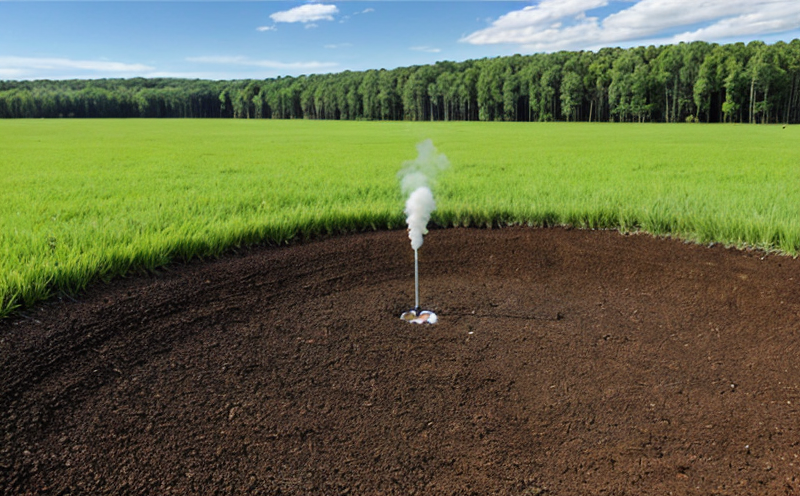ASTM D3987 Shake Extraction of Mining Solid Waste Testing
The ASTM D3987 standard provides a method for determining the leaching potential of mining solid waste, which is critical in assessing environmental impacts. This testing is essential to ensure that materials used in mine tailings and other waste products do not contaminate soil or water sources.
During this shake extraction procedure, samples are mixed with distilled water under controlled conditions. The mixture is then allowed to settle, after which the leachate (the solution containing dissolved substances) is collected for analysis. This process helps in evaluating the amount and type of contaminants that could potentially be released into the environment.
The test parameters include specific shaking times, temperatures, and volumes of water used. The apparatus required includes a shaker unit capable of maintaining precise conditions, as well as appropriate containers to hold both the solid waste samples and the leachate during extraction. Compliance with ASTM D3987 ensures accurate measurement and reporting.
The acceptance criteria for this test are based on the concentration limits set by local or international regulations. Deviations from these standards can indicate potential environmental hazards that need to be addressed through further mitigation measures.
For quality managers, compliance officers, R&D engineers, and procurement teams, this testing is vital in ensuring regulatory compliance and minimizing risks associated with mining waste management practices. The results of ASTM D3987 tests are used in decision-making processes related to waste disposal methods, containment systems design, and operational adjustments aimed at reducing environmental footprints.
The process begins with thorough sample preparation involving representative collection from various parts of the mine site. Proper labeling ensures traceability throughout the testing procedure. Once prepared, the samples undergo rigorous shaking according to ASTM D3987 specifications followed by detailed analysis using advanced analytical techniques such as ICP-MS or HPLC.
Results are reported meticulously adhering to the guidelines provided in the standard. These reports serve multiple purposes including internal documentation for quality assurance, external submissions to regulatory bodies, and input into academic publications enhancing industry knowledge bases.
Applied Standards
- American Society for Testing and Materials (ASTM) D3987 - Standard Practice for Shake Extraction of Mining Solid Waste
| Standard | Description |
|---|---|
| ASTM D3987 | This standard specifies the procedure for determining the leaching potential of mining solid waste by shake extraction. It is used to evaluate contaminant release into the environment. |
Industry Applications
- Mining and quarrying industries
- Environmental impact assessments of mining operations
- Compliance with environmental regulations related to waste management
The ASTM D3987 shake extraction test finds extensive application across various sectors. Mining companies use it as part of their routine environmental monitoring programs to ensure that the materials they handle are not hazardous when released into natural environments.
Environmental consulting firms often employ this methodology during project evaluations where new mine sites need certification under stringent ecological protection laws. By applying ASTM D3987, these experts can provide robust evidence supporting compliance with international standards like ISO 14001 for sustainable management systems.
Competitive Advantage and Market Impact
The ability to accurately assess the environmental impact of mining activities through rigorous testing not only enhances corporate responsibility but also contributes significantly towards competitive advantage. Companies that demonstrate proactive steps in mitigating risks associated with their operations are more likely to attract investors interested in sustainability practices.
Moreover, adherence to international standards like ASTM D3987 helps firms establish credibility among regulatory authorities and stakeholders alike. This can lead to smoother interactions during negotiations over permits or when responding to potential liabilities arising from environmental incidents.
In terms of market impact, sustainable practices supported by reliable test data such as those obtained via ASTM D3987 contribute positively towards brand reputation. Consumers increasingly favor products produced under environmentally friendly processes, making it advantageous for mining companies to showcase their commitment to green initiatives through comprehensive testing protocols like this one.





